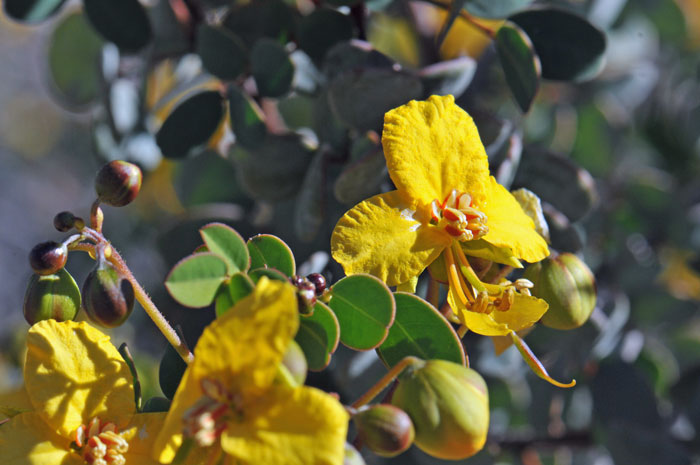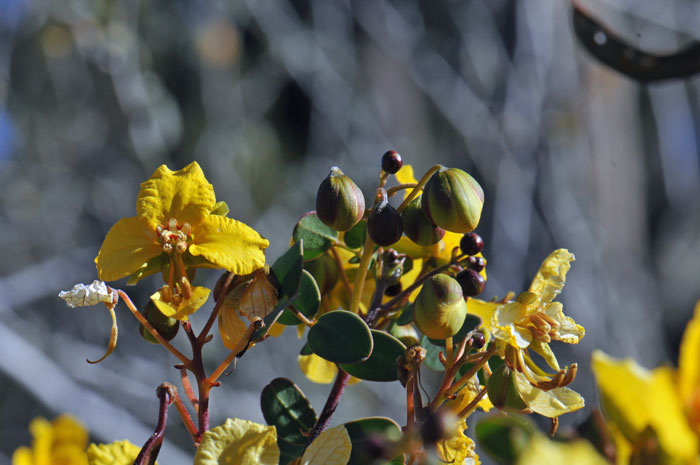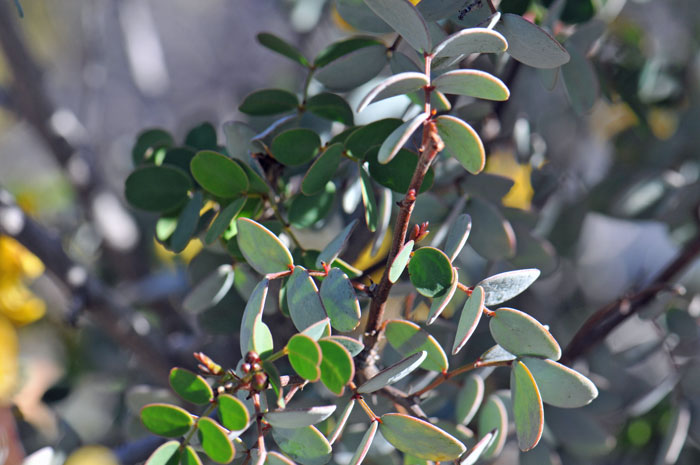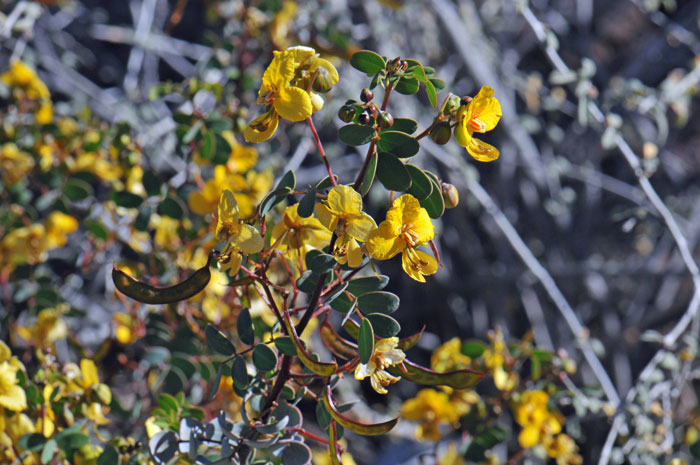Senna purpusii, Baja California Senna




Scientific Name: Senna purpusii
Common Name: Baja California Senna
Also Called:
Family: Fabaceae or Leguminosae Family
Synonyms: (Cassia purpusii, Adipera purpusii)
Status: Native
Duration: Perennial
Size: Up to 6 feet (1.8 m) or more and almost as wide.
Growth Form: Baja California Senna is a shrub with multiple stems.
Leaves: Baja California Senna has green leathery foliage that has a purple-green color; the leaves are pinnately compound.
Flower Color: Baja California Senna has clusters of yellow, pea-like flowers; the fruit is a pod.
Flowering Season: October through May.
Elevation: Up to 1,500 feet (457 m).
Habitat Preferences: Coastal mesas, plains, hills and along arroyos; also sandy-gravelly flats near Creosote communities in Baja California.
Recorded Range: Southern California, central Baja California and northwest Mexico.
North America & US County Distribution Map for Senna purpusii (not available).
U.S. Weed Information: Unknown
Invasive/Noxious Weed Information: Unknown
Wetland Indicator: Unknown
Threatened/Endangered Information: Unknown
Genus Information: In North America, USDA Plants Database lists 27 native species and 14 introduced species for Senna. Worldwide, World Flora Online includes 362 accepted species names for the genus. The Plant List lists 351 species for Senna.
The genus Senna was published in 1754 by Philip Miller (1691-1771).
In the Southwestern United States: Arizona has 14 species of genus, California and New Mexico each have 11 species, Nevada has 3 species, Texas has has 23 species and Utah has 0 species. Data approximate, subject to revision.
Several members of the genus Senna have been re-classified from Cassia.
Comments: Scant information exists for Senna purpusii, published or on-line.
Also see in Southwest Desert Flora; Twinleaf Senna, Senna bauhinioides, Coves' Cassia, Senna covesii and Woolly Senna, Senna hirsuta v glaberrima.
In addition, according to the Arizona Sonora Desert Museum, "Plant Care Information" notice, Sulphur, Hairstreak and Blue butterflies are attracted to all of the Sennas.
The genus Senna was published in 1754 by Philip Miller (1691-1771).
The species epithet “purpusii” (purpus'ii:) is named in honor of Carl Albert Purpus, (1851-1941) (aka Carlos Alberto).

